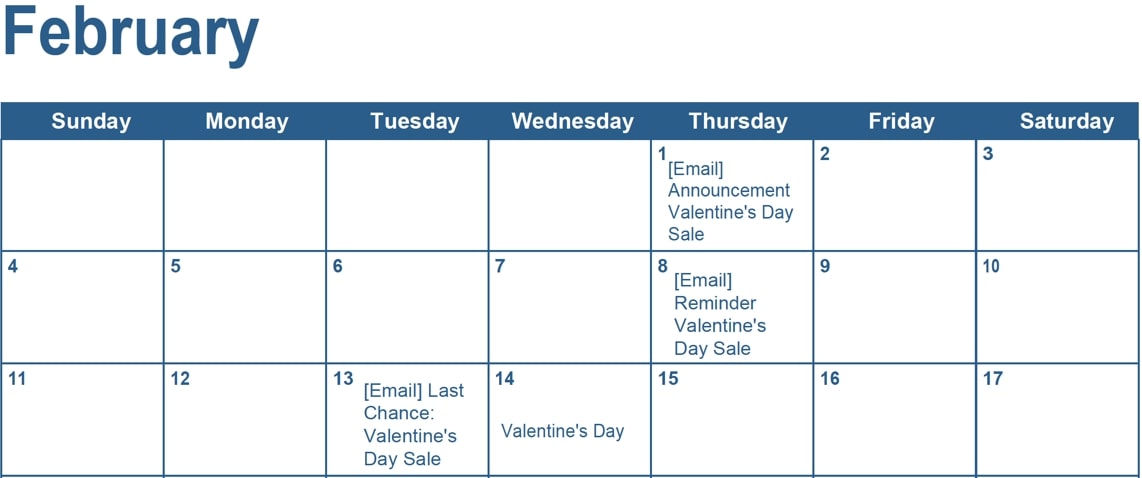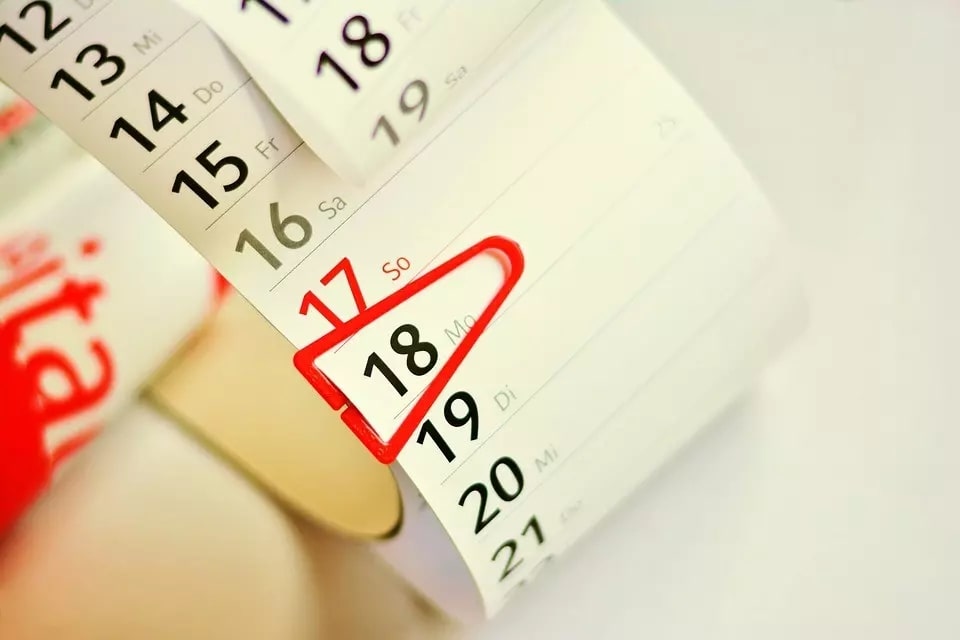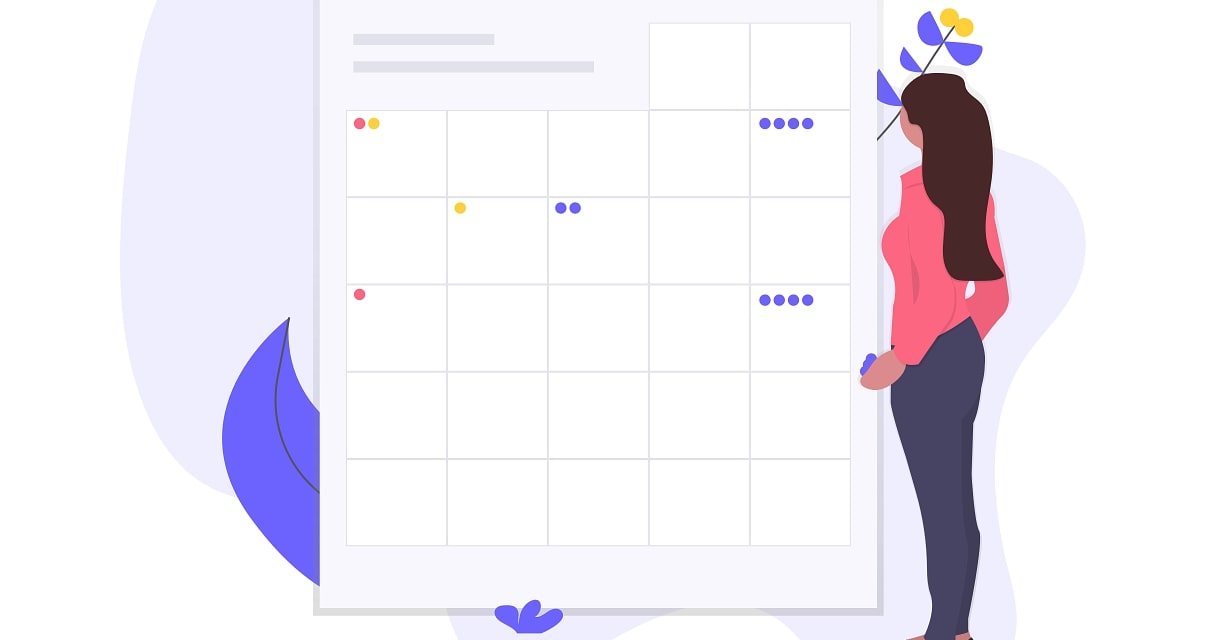How to Create an Email Marketing Calendar? Complete guide
How do you ensure that your newsletters, promotional emails, and other communications are sent at the right times? Starting with an email marketing calendar will simplify a big piece of the puzzle, but it requires some preparation, forethought, and setup.
It’s easier to stick to your plan and follow it through once you’ve planned and visualized when to send out your newsletters, launch your email campaigns, and schedule your marketing follow-up emails during the year. That means the goals you establish for yourself at the beginning of the year (or sales cycle) will be more attainable and doable than ever before.
In this article, I will share with you how to create an email marketing calendar from scratch. Let’s jump right into the details!
What is an email marketing calendar?

A marketing calendar is a detailed plan for marketing events. It depicts your preparations and the timeline for completing each of your marketing activities. In other words, it is a tool that can be used to accomplish your marketing objectives in a specific time frame.
To run your marketing campaigns, you’ll need a set schedule. You’ll be able to set goals and monitor your progress against them. A marketing calendar is important for keeping track of your team’s activities, deadlines, and accomplishments. Your email marketing calendar can be as simple as this example:

Whether an email marketing calendar is simple or complicated, having one will help you run more effective email marketing campaigns.
The purposes of having an email marketing calendar

A marketing calendar can provide a lot of benefits to your marketing campaign and business as a whole:
- Plan ahead to meet your goals
- Get everyone on the same page
- Track your performance
- Allows for better plans in the future
How to choose the right events for your email campaigns

Choosing action days for your promotional emails requires some creativity. Come up with creative ways to link ‘international days’ to your goods and services. This form of campaign will help you increase visibility and relevance. What types of activities can be covered by the email campaign calendar?
Traditional holidays or special shopping days, such as Black Friday, are on any marketer’s calendar and should be taken into account when preparing a campaign. If it’s Easter, Pentecost Weekend, or Christmas, when family and friends get together, everybody likes to give and take – including gifts. As a result, exclusive deals are a must!
Days of Action: In addition to religious holidays, special days of action are often declared by organisations such as UNESCO or associations. They act as a reminder of specific events or subjects. America’s National Days, such as “Selfie Day” on June 21st, are popular for email campaigns.
How to create an email marketing calendar

Step 1: Review Your Previous Year
First, go through your to-do list from last year. Did you have any unfinished content goals or ideas from last year? Determine if they are still relevant, and if so, begin your new list with these ideas. This accomplishes two objectives. You won’t have any unfinished business or plans that you didn’t put into action, and you won’t have to start from scratch.
Step 2: Evaluate Your Past Efforts
Examine your past content. You should be tracking results on a regular basis, but if you aren’t, take a look at the last six months overall. If you send email newsletters, consider asking the following questions:
- Which email subjects resulted in the highest click-through and open rates?
- Which of your blog posts received the most traffic?
- What social media posts received the most engagement – shares, likes, or comments?
Make a list of the subjects or strategies you want to continue with in the coming year. We discovered that the most successful content for our clients was timely, i.e. related to an upcoming holiday, such as Mother’s Day. Content that is helpful or educational, such as campaigns highlighting ways to save money, was also very successful.
Step 3: Identify your priorities and goals
Perhaps you want to increase revenue by 30%. Perhaps your goal for next year is to acquire 200 new customers. Whatever your objectives are, consider how your content will help you achieve them. When you’re feeling stuck or upset, remind yourself of your goals and priorities. The end result is well worth the effort.
Step 4: Download or create a calendar template
If you are having difficulty handling your email campaigns, you can use ready-made resources that have been provided by other businesses. They provide a wide range of templates to help you with your calendar development process. So, if you want to have the best calendar in your asset, you can use any of the best templates available online. A few Google searches will give you tons of templates.
In addition, several third-party services provide calendar templates in the form of an Excel spreadsheet. This format allows you to customize the template based on the needs of your organization. So, choose the right template and plan it neatly to ensure that your campaign runs smoothly.

Step 5: Commit to a schedule
Determine what timetable you can stick to once you’ve determined your goals. It is important that you make your schedule attainable. Nothing is more demotivating than feeling like you can’t live up to the expectations you’ve set for yourself. Determine what is feasible for you: once a week, once every other week, or even once a month. Whatever the case might be, stick to it.
Step 6: Look at Your Calendar
Now that you’ve determined what you’re willing to commit to, start planning your content for particular days on your calendar. Then, depending on how far ahead you want to prepare, you’ll be able to decide how many ideas you’ll need to generate for the month, quarter, or year.
Begin searching for significant dates in your own life.
- Do you want to commemorate a corporate milestone or a special event?
- Do you have a seasonal promotion or sale?
- Is there a calendar of special events?
Make a note of these in your calendar. If general holidays or seasonal ideas make sense for your company, including them. A general contractor, for example, may provide advice on weatherproofing before winter. A real estate agent may create a newsletter with the best spring cleaning advice. Make sure you’re spending the majority of your time providing useful content marketing rather than just self-promotion.
Step 7: Schedule Everything
Begin with a publish or send date. Once you have that date, work backward to determine when you should begin. Allow yourself enough time for development, analysis, and testing. Testing involves double-checking photos and links, as well as ensuring that the content displays correctly across devices and email clients.
Let’s use a blog post as an example:
- Monday: Pick a topic.
- Wednesday: Write the first draft.
- Thursday: Make edits and add images.
- Monday: Build an email template.
- Tuesday: Send email.
This will almost certainly have to change based on your changing schedule. Plan your time around any holidays, vacations, or long meetings that would require you to be away from your desk or not working. Be sure to build and plan content for these situations ahead of time.

Step 8: Prepare your content ideas
After you’ve completed all of your personal, seasonal, and holiday ideas for the coming year, count how many topics you still need. If you don’t already have an ongoing idea log, take a few minutes to discuss subjects you’d like to write about, questions your clients often ask you, or industry trends. Continue until you have a sufficient number of ideas for your email marketing calendar.
Create an idea file if you don’t already have one. It’s always a good idea to have contingency plans in case anything doesn’t work out. You may also come across a theme or another timely piece that must run at a particular time. Keep a record of these ideas as you can also use them in your newsletters, blog articles, or social media posts.
Step 9: Make Measuring and Adjusting Part of Your Process
Measurement, like content, can be planned. You may review your content on a weekly, monthly, quarterly, or other basis that works for you. Most importantly, ensure that you are periodically reviewing your efforts, assessing what is working and adapting as needed.
This way, you can discover that certain types of content perform well for you. You will want to add more topics with similar content in the future. Alternatively, the reverse may be accurate, and you may need to adapt by removing those types of content. Alternatively, you may not be publishing often enough, resulting in a decline in interaction.
If you plan your content on a monthly or quarterly basis, you’ll need daily times to plan for upcoming topics and publication schedules. By following these steps, particularly regularly reviewing your efforts, you will be able to write the best content possible, impress your followers, and have a robust email marketing calendar planned out ahead of time.
Final words
That’s it! I hope that this article has provided you with valuable information about how to create an email marketing calendar. Please feel free to leave comments below for further discussion on this topic!
New Posts

10+ Mother’s Day Spa Promotion Ideas To Increase Sales







